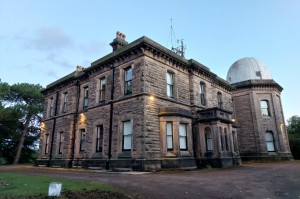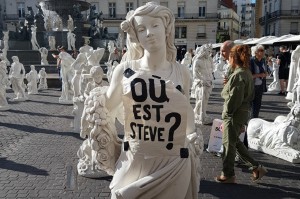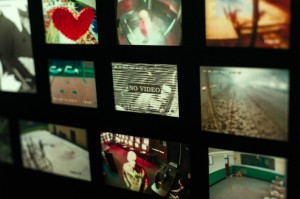Field Trip: Helsinki, Finland – Happiness and Cultural Guardians
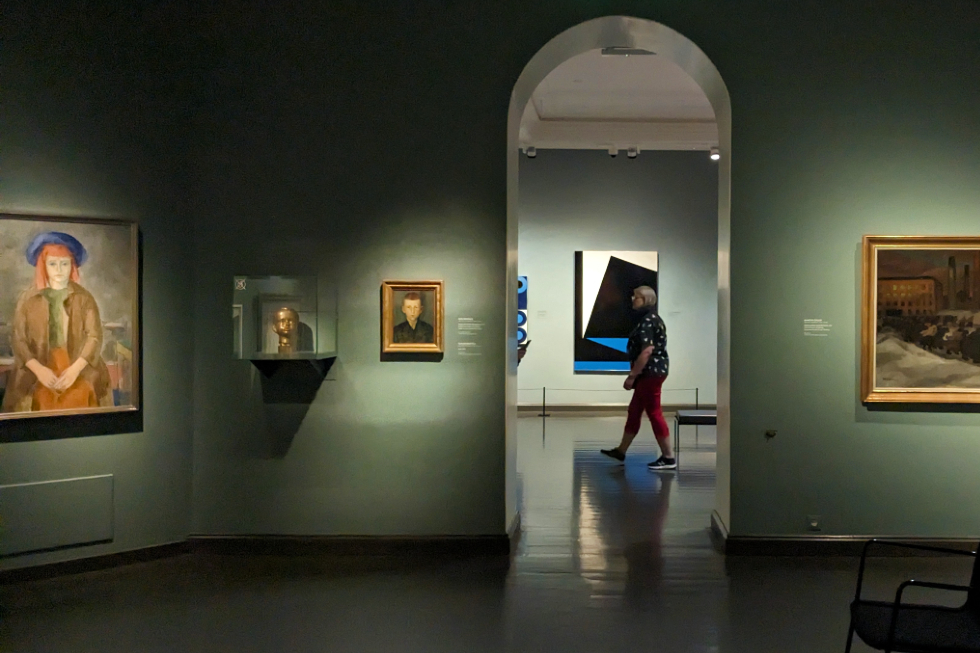
Taking in climate change at Helsinki Biennial, diversity at the Ateneum, and visiting contrasting new galleries in an art school and bar toilets (!), Mike Pinnington’s return to Finland’s capital city is a timely reminder of how the arts are valued by the world’s happiest people…
We’re at a table in the cosy waterfront setting of Wellamo, a tiny restaurant whose raison d’etre is its commitment to using only Finnish/Nordic ingredients. We are, therefore, taking the opportunity to enjoy some home-grown beers and wines. The place is packed with cheerful locals and whispering couples; it feels like the perfect spot to celebrate an occasion, or have a date.
This isn’t our first time in Helsinki: we’ve been lucky enough to visit several times, working with artists and institutions on text in all its forms – from gallery interpretation to artist statements. Owing to the global pandemic, though, it’s been a while. Soaking in the warm atmosphere and smells emanating from Wellamo’s kitchen, it feels good to be back.
We’re here to meet with Arja Miller, director of Helsinki Art Museum (known to all simply as HAM). We chat about the parallels and differences between art scenes in the UK and Finland, and, more specifically, between Liverpool and Helsinki; during our visit, each is host to a Biennial. And, coincidentally, Helsinki’s festival had been curated by Joasia Krysa, Professor of Exhibition Research and Head of Art and Design at Liverpool John Moores University’s School of Art and Design.
We discuss some of the artists who have made the trip from exhibiting in Liverpool over to Helsinki, such as augmented world-builders Keiken Collective (Hana Omori, Isabel Ramos and Tanya Cruz), and Danielle Braithwaite Shirley, who foregrounds Black Trans lives using video game installations – all who’ve shown at FACT Liverpool. Talk turns to commissioning, and Finland’s Percent for Art principle, whereby one percent of any construction project’s budget is designated to acquiring or funding works of art. UK readers won’t be terribly surprised to hear that Britain has never had such a policy, meaning that it’s up to other parties to stump up the money. It casts new light on cities like Liverpool’s appetite and commitment – never mind financial clout – for public art.
As outsiders, it can’t help but reinforce our sense that this part of the world thinks differently about itself – and its citizens – as Finland once again tops the UN’s World Happiness Report (which takes into account health, income and social support). We enjoy the rest of the evening chatting casually about art; we’re in good company after all.
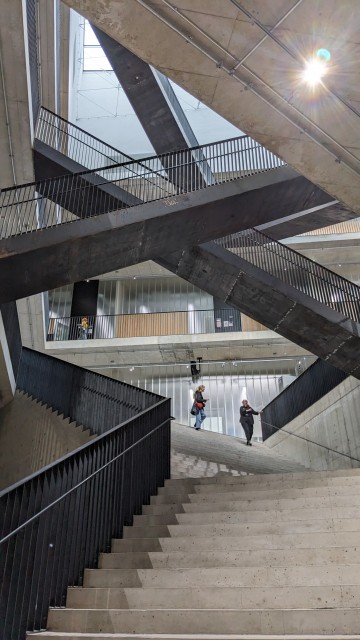
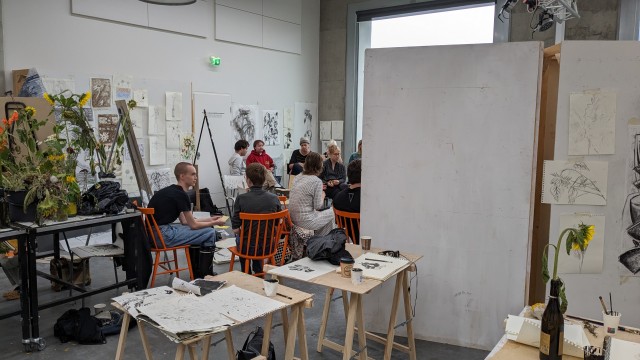
Later in the week, we are reminded again of this sense of responsibility to citizens when meeting with the City of Helsinki‘s Acting Cultural Director, Mari Männistö. One of the initiatives she is most proud of being involved with is Culture Kids, a scheme whereby each child is invited, free of charge, to two events per year, by an assigned organisation who acts as a cultural guardian for that child.
Coming from a country in which most galleries and museums feel as though they pick up the slack for, rather than work in tandem with, local and national government when it comes to arts education and engagement, we can’t help but be impressed, but also dismayed. We reflect on how obvious and beneficial Culture Kids is – and wonder why similar government-led provision isn’t happening back in the UK.
Given such benefits, it comes as little surprise to find a smattering of English speakers in this city – and not just the bilingual locals. At the cavernous Kuva/Tila gallery, Academy of Fine Arts Mylly, University of the Arts Helsinki’s new exhibition space for students and staff, we find Irish artist and lecturer in Contemporary Art Practice, Suzanne Mooney, a resident since 2018. Over coffee, we chat about Mooney’s undergraduates, their expectations, and the question of staying in the city post-graduation to contribute to the scene here, or moving abroad for different experiences. Artist and academic both, Mooney has seen both sides. Certainly, the provision and opportunity for those studying here at the academy is ample; light-filled artist studios, cutting-edge teaching resources, and a dedicated modern gallery, all contained under the roof of this purpose-built space.
That evening we meet with a colleague of Mooney’s, and our friend from Manchester: Professor of Fine Art Pedagogy at UniArts, Magnus Quaife (who, despite the name, is not Swedish). As a modest bar crawl ensues, we take in some of Magnus’ – and our – favourite places to grab a beer in Helsinki, including trendy dive bar SalamaNation, home of Quaife’s new in-house gallery space, Suihkulähde. Translated as Fountain in Finnish, and perfectly reflecting Quaife’s sense of humour, it is, of course, in the accessible toilet. Showing only one artwork at any given time, it is at once a nod to art history via Marcel Duchamp, and an exploration of where we – and the public at large – might give a few minutes of our full attention to a print or photograph… or even the soap (by Jack Brown).
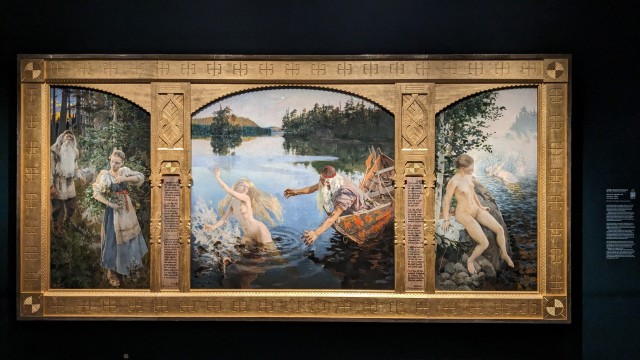
Amid the flurry of meetings, and the odd beverage, we make sure to carve out time to grasp more of the city’s rich arts and culture offer. Next morning, not too worse for wear, we head in the direction of a gallery that should be on every visitor’s radar: home of the national collection, the Ateneum. A Neo-Renaissance beauty that is a stone’s throw from the similarly striking train station, it holds great riches spanning Finland’s famed art history.
The major draw of its displays has recently been subject to a rehang, and outgoing director Marja Sakari (who will be replaced this year by Anna-Maria von Bonsdorff). “We took change as our starting point,” Sakari is quoted on the wall; “Our key concerns were the stories the collection can tell us today, and how it could truly be a collection for the whole nation.”
The sections – Art and Power, The Age of Nature, Images of a People and Modern Life – bring focus to the story, one that takes in and reflects not only the past, but also the beginnings of Finnish art, and artists’ reckoning with a tumultuous present and unpredictable future. Akseli Gallen-Kallela, known for his illustrations of Finnish national epic the Kalevala, and luminaries such as Helene Schjerfbeck and Hugo Simberg remain towering figures. Whatever your taste, there is something for you. There is always work to be done, however, especially in better reflecting a diversifying society that is barely 100 years old – and the spectre represented by a new coalition government that counts among its number the anti-immigration Finns Party (formerly known as True Finns).
Art isn’t created in a vacuum; while the romantic stereotype of it being an endeavour of solitude persists – better that the muse can strike – ideas and inspiration also spring forth in company. In the name of this and more, that evening we head to the offices of Laura Köönikkä, an independent curator, mentor and driving force behind the Finnish Art Agency. The occasion is one of simply coming together with those who might not ordinarily do so; the artists squeezed, sardine like, into a room of their peers.
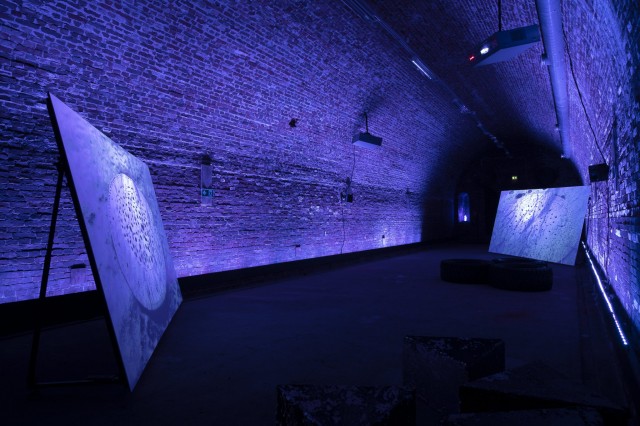
Conversations, common concerns – and, no doubt, gossip – are soon animatedly shared. My multiple visits to Finland have afforded me the chance to meet many contemporary artists. This is something I deeply appreciate: to speak about how they present their work, hear about their wider practice, their influences and experiences, their hopes and expectations. And the evening presents a great opportunity to reconnect with some familiar faces. It’s genuinely lovely to see Camilla Vuorenmaa and Anu Kauhaniemi, two very different painters, whose careers I’ve followed since our first meetings on previous trips.
Not a natural conversationalist, however, I eventually take the chance to sit down. But I soon find myself chatting away with Kreetta Järvenpää, and I’m so glad I did, for she’s a photographer capable of incredible things. Her studio photographs, which must be seen to be believed, look like old master paintings of flowers. Later, I talk with Sami Havia, who brings the worlds of abstraction and figuration together in his questioning works on paper, and meet the recently crowned Young Artist Of The Year, sculptor Eetu Huhtela. All of which goes to demonstrate the richly textured make-up of Helsinki’s contemporary scene; it’s one we’re always so happy to be reacquainted with.
Next day, we head to the harbour to catch the ferry over to Vallisaari – one of Helsinki’s 330 islands which between 1918 and 2012 was under the purview of the Finnish Defence Forces. Islands have long been used by authors as a literary device; set apart from the fixed reality of the mainland by choppy waters, they readily lend themselves to flights of fancy.
Helsinki Biennial has leaned into this, staging the festival of contemporary art on Vallisaari for a second time, with the title New Directions May Emerge. This iteration takes its theme from anthropologist Anna Lowenhaupt Tsing’s assertion that “As contamination changes world-making projects, mutual worlds – and new directions – may emerge.” It’s a thoughtful departure point, one with the intention of exploring how, even at this relatively late stage of proceedings, “we might find new [and hopefully better] ways of living in, and understanding, the world.”
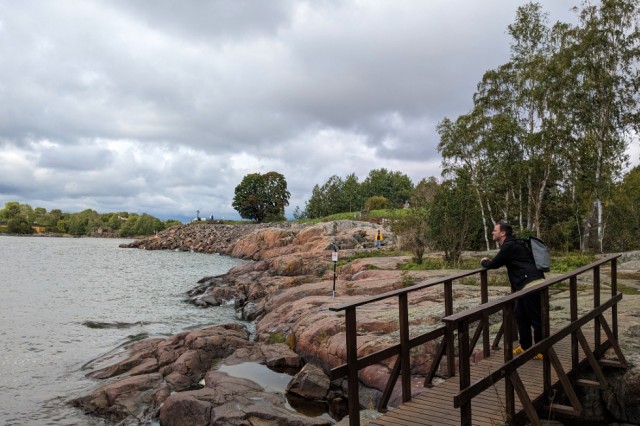
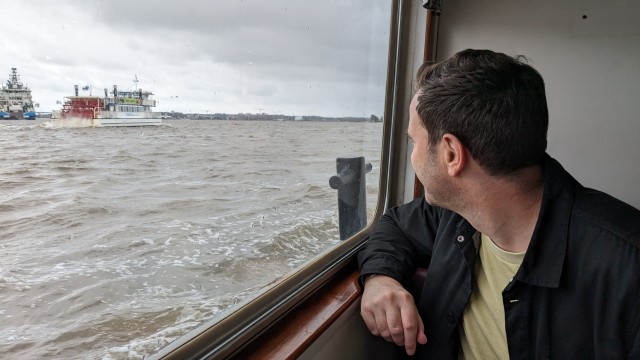
Traversing Vallisaari’s woodland paths and coastline – which on our sun-kissed visit can’t help but be the star of the show – we encounter some well-selected works that enrich this idea of mutual worlds. A favourite work is by Lithuanian artist Emilija Škarnulytė (who has just been awarded the Ars Fennica prize). Her ‘eco sci-fi thriller’ Hypoxia, a multi-channel installation, weaves together traditional storytelling and the widely reported ‘discovery’ of an alien craft in the ocean, to consider humanity’s impact on the Baltic Sea, confront ecological catastrophe, and muse on the anthropocene.
Later, back on dry land, we head to HAM for the rest o9f the Biennial, where things are no less fantastical – in fact, it’s almost as if a mythological creature has escaped the island to lie in wait for us there. This is Estonian Bita Razavi’s kinetic sculpture, Kratt, whose beginnings can be found in the folklore of the artist’s homeland, and one that requires three drops of its master’s blood to be given as a gift to the devil in order for it to come ‘alive’. Taking the form of a sprawling mechanised arachnid printing press, it represents both servitude and, in its reach, the spreading of a colonial worldview.
When last we visited Finland, the UK was (unbelievably it felt back then as now) in the throes of Brexit and leaving the EU, and this time, Finland had recently joined NATO – seismic geopolitical shifts both. So it seemed fitting that we’d travelled from Liverpool – whose recent Biennial was “addressing the history and temperament” of a city haunted by the transatlantic slave trade, and what was once referred to as the second city of the British Empire – to Helsinki, undertaking, through art and artists (and an evolving population), its own reckoning with people and politics.
Each of these festivals of contemporary art wrestled with issues whose implications are both local and global. It’s art’s job to respond to, contend with, and to challenge. Neither Liverpool nor Helsinki lacks artists. Neither should they be found lacking in response to the most pressing concerns of our times.
Mike Pinnington
Images from top: Ateneum galleries, Helsinki. Stairway and studios in Academy of Fine Arts Main Building Mylly, University of the Arts Helsinki. Akseli Gallen-Kallela, Aino Myth triptych, 1891, Ateneum. Mike Pinnington on Vallisaari island, for Helsinki Biennial, and ferry. All photography by Laura Robertson, 2023, apart from second from last: Emilija Skarnulyte, Hypoxia, 2023, Helsinki Biennial 12.6.-17.9.2023, Vallisaari, Helsinki, Photo: © HAM/Helsinki Biennial/Kirsi Halkola
With thanks to Finnish Art Agency and Helsinki Partners



